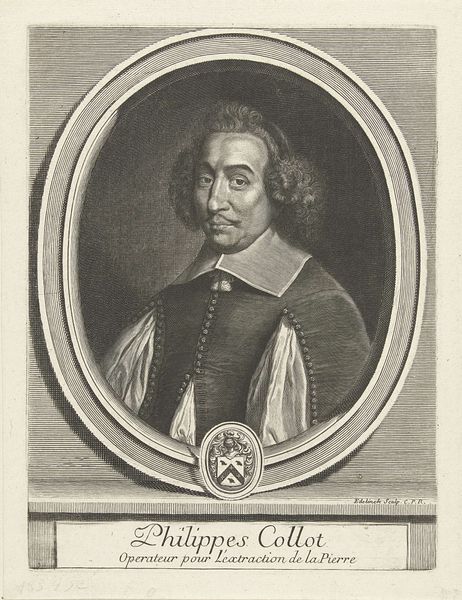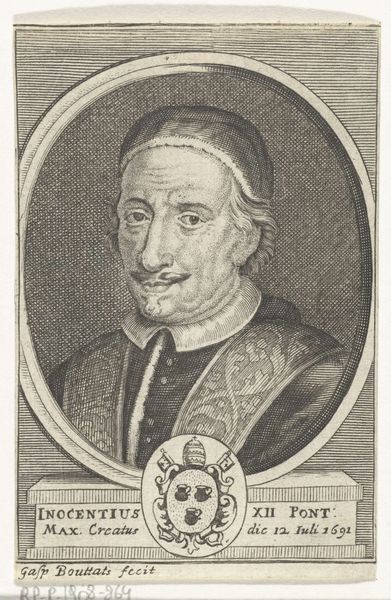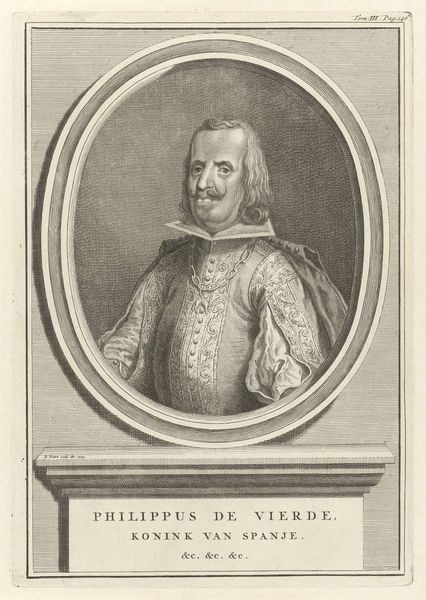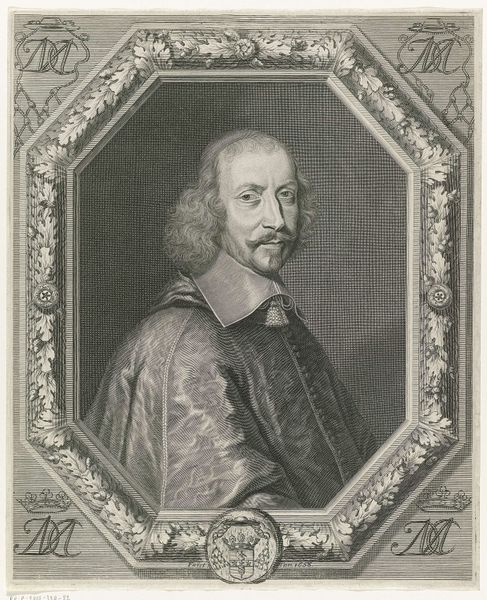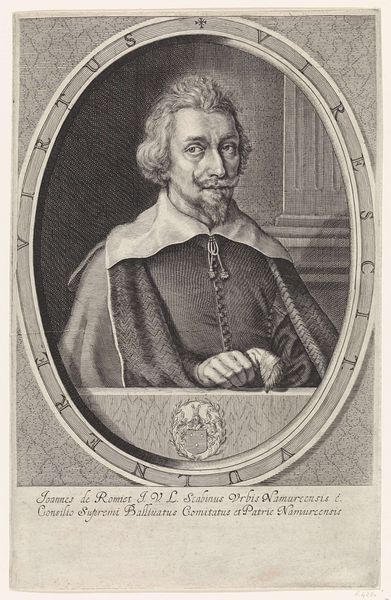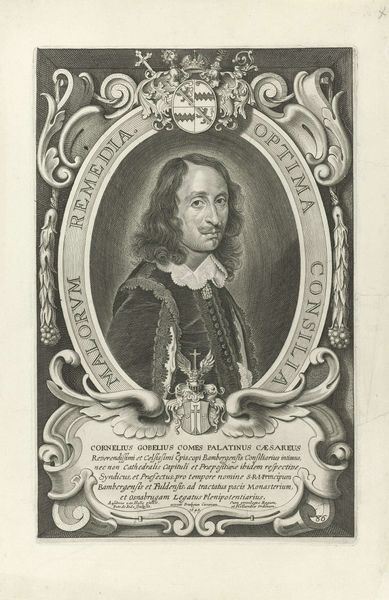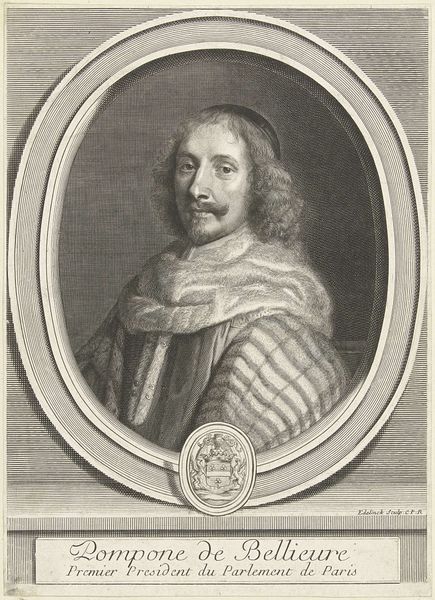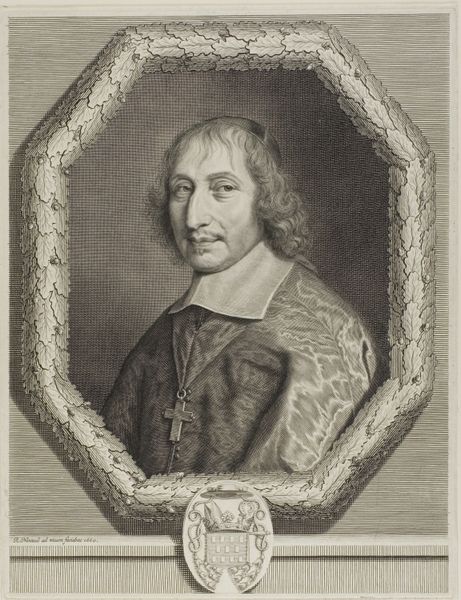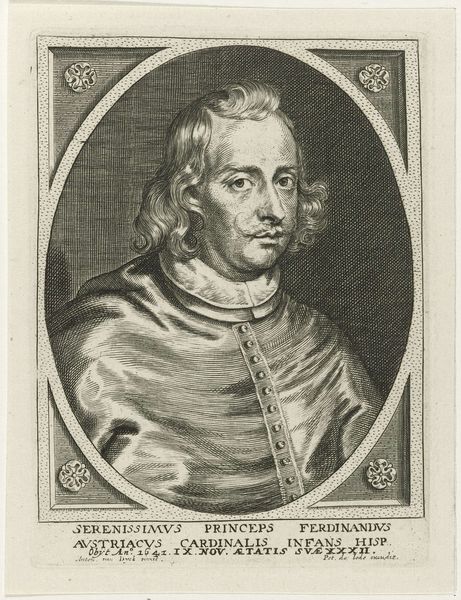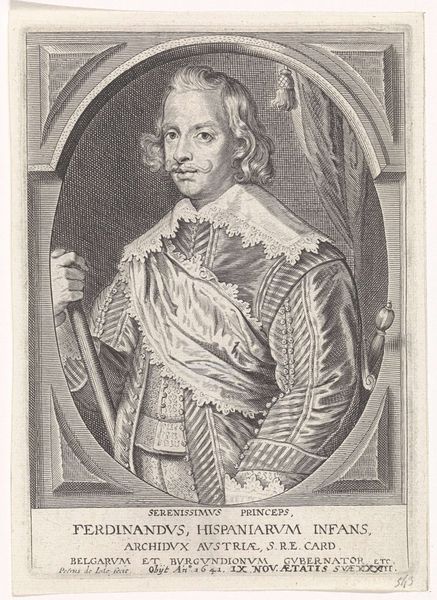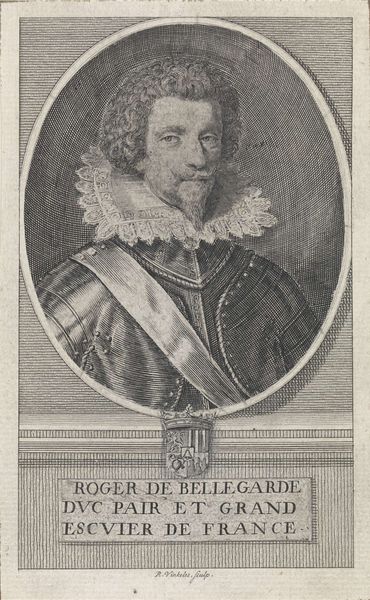
engraving
#
portrait
#
baroque
#
old engraving style
#
caricature
#
portrait reference
#
vessel shaped image
#
line
#
portrait drawing
#
engraving
Dimensions: height 155 mm, width 95 mm
Copyright: Rijks Museum: Open Domain
Curator: This portrait, created sometime between 1661 and 1693, presents us with a likeness of Cardinal Richelieu. Peter Paul Bouché rendered it as an engraving, showcasing a striking study in lines. Editor: The engraving feels almost…austere. The sitter is captured in monochrome, encircled by rigidly defined bands, lending the portrait a formal, unyielding mood. It doesn't exactly radiate warmth, does it? Curator: Well, considering Richelieu’s reputation as a formidable, somewhat ruthless, figure in French history, "warmth" might not be the primary goal. Bouché skillfully uses the graphic medium to communicate power. Editor: You’re right. The oval framing focuses our attention sharply. The precise rendering—note the textures of the robes and the way light falls—speak to his prominence. It's almost a study in controlling light and shadow, reflecting the subject’s control in the political landscape. Curator: Indeed. And observe the intricate rendering of the heraldic symbols. Bouché emphasizes the Cardinal’s status, doesn't he? Look closer – notice the line work defining every fold of fabric and curl of his facial hair. Each line carries information about the figure's essence. It makes me wonder what the artist aimed to express. It almost feels like a glimpse of Richelieu's ambitions or worries, cleverly veiled behind regal facade. Editor: That facade is powerfully constructed. There's an inherent tension between the detailed realism of the portrait and the decorative flourishes around it. These visual strategies work together to amplify his importance; It is less about pure likeness and more about constructing an image of unwavering authority. Curator: Perhaps, with these elements, Bouché offered something more insightful, maybe a study of the Cardinal, neither hero nor villain, captured somewhere in the vast expanse of human complexity, inviting speculation and maybe even a sliver of empathy, centuries on. Editor: And isn't that what art does best, offer up an invitation to look, consider, and maybe just question a little deeper than we did before?
Comments
No comments
Be the first to comment and join the conversation on the ultimate creative platform.
